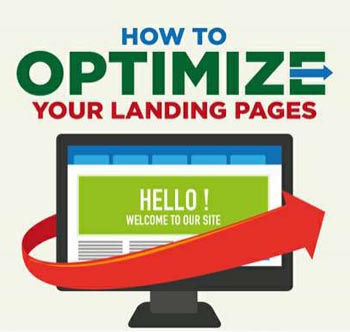Landing Page Optimization – A/B Testing

By now, most of the companies are looking for professional teams to help them get the customers to land on their page and bring them revenue. While the competition is hot to attract anyone who wants to spend, an easier approach to look at optimization is via doing A/B testing.
The goal of A/B testing is to identify the best landing page OR landing page that works.
Let us understand A/B Testing.
What is A/B Testing?
A/B testing for landing pages is when a vendor creates two or more versions of your landing page and tests an element. For instance, one of your landing pages can include ‘Call for Action in Big Bold and colorful’ while the other may have Simple, professional and attractive call for action. Then the vendor promotes both the pages, which would mean the same, but have different attractiveness to the audiences simultaneously. Each page can have a tracking and then vendor can track the performance of each page, and present you a report indicating which page yields better results. It is generally known that A/B testing is a scientific approach to helping you develop a successful conversion strategy.
When Should You A/B Test?
Well, it is a difficult question to answer. Prior to answering, one should look at do we have time to do it? How long can we wait for the results to come and decision to make? While generally vendor suggests you to perform this, it is your call. If you do not have time to test which page works for you, it is suggested that one can create a committee of odd number of people (Not hard core Marketing team members, but generic users – Can be Marketing team family members :-)). We can then ask them to rate the page based on various parameters – Like Look & Feel, Attractiveness, Conversion rate possible (High/Medium/Low) and other factors.
Study Competitors landing pages
One can avoid A/B testing if they can zero in the best landing page the competitors have. But one will not know if that landing page is working for the competitor or not. May be, your competitors aren’t A/B testing. It is learnt that only about 30 to 40% of marketers utilize this optimization technique for their landing pages. Running A/B test on website for each of the landing page is a great way to learn which type of page generates more leads from the traffic you’re getting. It is generally seen that just a few small tweaks to a form or changing for the ‘call-to-action’ could have a significant effect your lead flow.
How to create pages for A/B Test?
Typically, with A/B testing, only one element of a page is changed at one point in time in order to isolate the variable as the cause of any change you might see. In other words, if we wanted to test a ‘Call for Action Color’, one should keep everything else constant across both variations so that we can know the change in conversion rate is most likely from the different color for ‘Call-for-action’. Again the time taken to conduct the test also needs to be looked into. So it is suggested that one can also consider the entire landing page a “variable” and test entirely different versions against each other. While this diminishes confidence in the exact features that caused the difference in your results, page-level testing often delivers faster and more insightful results. Therefore, it’s a good idea to try A/B testing at both the incremental and page level.
What can be A/B Tested?
Any Landing page will have following things – Call for Action, Content, Images, Color, Font usage, Layout, Attractiveness, Enquiry form, Buttons, Testimonials (May be), Trust seals (Payment gateway, Verisign etc). So one can do a mix-and-match to create variation(s) for landing pages and take it forward.
Only A/B testing is good?
No. Not at all. One can do A/B/C testing as well :-). But one should just not stick to Landing page optimization alone. You should also look at Search Engine optimization, integration of landing page with that of the website and Search engine marketing. Keywords optimization along with Social integration also needs to be looked into
